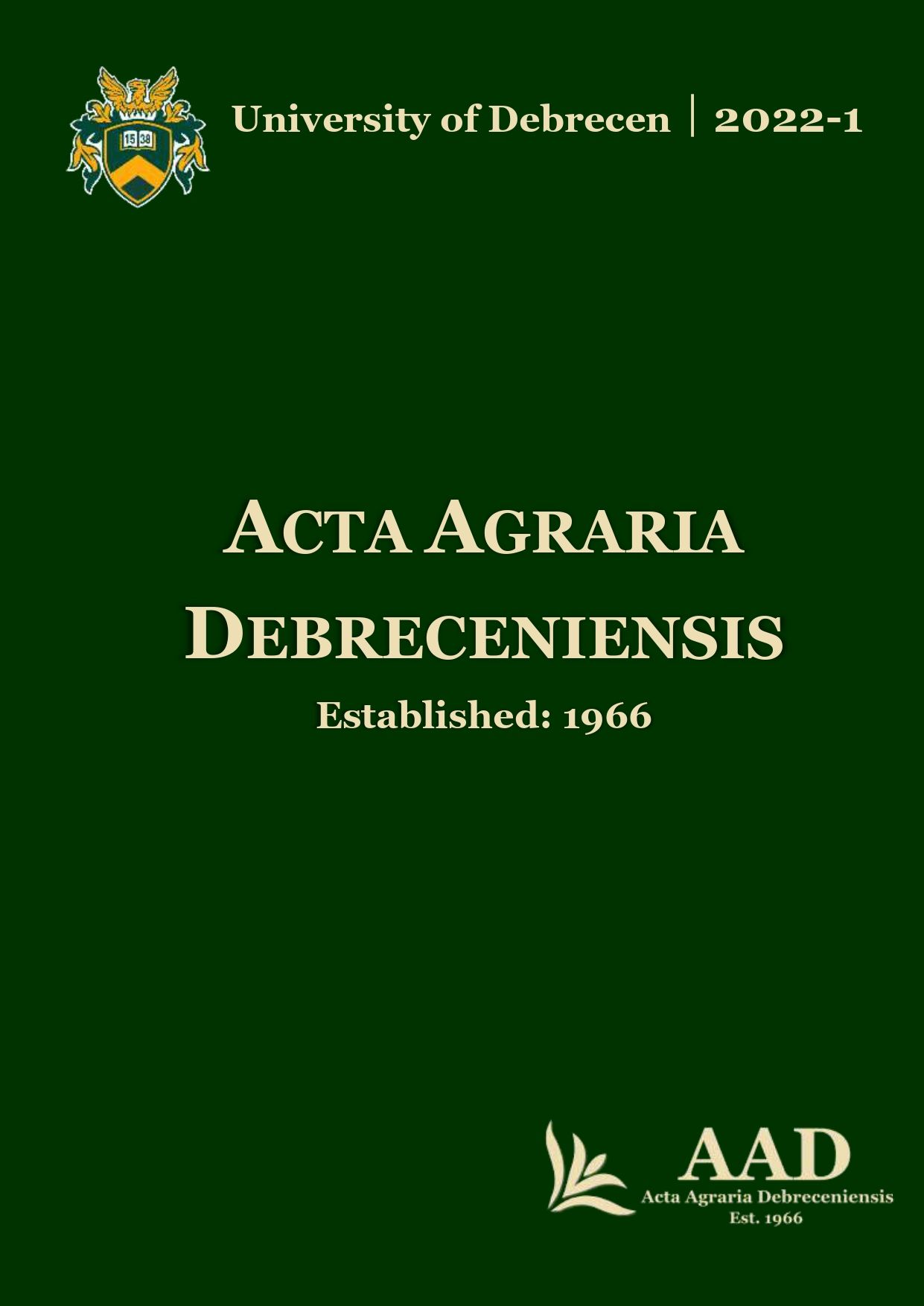Productivity of thinned black locust (Robinia pseudoacacia L.) stands in Hungary: case studies
Authors
View
Keywords
License
Copyright (c) 2022 by the Author(s)

This work is licensed under a Creative Commons Attribution 4.0 International License.
How To Cite
Accepted 2022-03-10
Published 2022-05-26
Abstract
Black locust (Robinia pseudoacacia L.) is one of the most important introduced tree species in Hungary, covering more than 24% of the stocked area and providing approximately 20% of the country’s annual timber cut. Consequently, the research and development activities related to the improvement of the growing technology of black locust are also important, especially in mitigating the negative effects of climate change. The aim of this study was to quantify growth and yield, responses of even-aged 12–31–year–old black locust stand to thinning in Hungary. The study has proved that irrespective of the yield class, age and thinning intensity, thinning could not increase effectively the cumulative volume production. As percentage of the control it has changed between +0.6 and -8.4%. On the other hand, it could increase the stand value based on stem quality index by 10–21%.
References
- Assmann, E. (1961): Waldertragskunde. BLV Verlagsgesellschaft, München-Bonn-Wien.
- Béky, A. (1983): A nevelővágások hatása a faegyedek vastagsági növekedésére kocsánytalan tölgyesekben. (The effect of tending operations on the diameter increment in Quercus petraea stands). Erdészeti Kutatások, Volume 75, pp. 173‒177. (in Hungarian).
- Béky, A.–Solymos, R.,(1991): Egy kocsánytalan tölgy erdőnevelési kísérleti sor tanulságai. (Conclusions from a thinning experiment in Quercus petraea stand). Erdészeti Kutatások, Volume 82, pp. 227‒235. (in Hungarian).
- Halupa, L. (1987): A nyárnevelési kísérletek újabb eredményei. Erdészeti Kutatások, Volume 79, pp. 79‒84. (Further results obtained from poplar tending operations experiments.) (in Hungarian).
- Hungarian Central Statistical Office (HCSO): https://www.ksh.hu/stadat_files/kor/hu/kor0004.html (in Hungarian), (accessed on 04.01.2022)
- Hungarian Meteorological Service (HMS): https://odp.met.hu/climate/homogenized_data/station_data_series/from_1901/, (accessed on 04.01.2022)
- Járó, Z.–Lengyel, Gy. (1988): Stand establishment. In: Keresztesi B. (ed.): The Black Locust. Budapest, Akadémiai Kiadó, pp. 87–115.
- Lee, H.–Lim, H.–Kang, J.W. (2019): Growth performance of exotic trees in Korea. Journal of forest and environmental science, Volume 35(2), pp. 115–120.
- Majer, A. (1969): A gyérítések racionalizálása. (Rationalisation of thinnings.) Az Erdő, Volume XVIII. 9, pp. 385‒389. (in Hungarian).
- Nicolescu, V.N.–Hernea, C,–Bakti, B.–Keserű, Zs.–Antal, B.–Rédei, K. (2018): Black locust (Robinia pseudoacacia L.) as a multi-purpose tree species in Hungary and Romania: a review. Journal of Forestry Research, Volume 29(6), pp. 1449-1463. https://doi.org/10.1007/s11676-018-0626-5 (accessed on 04.01.2022)
- Nicolescu, V.N.–Rédei, K.–Mason, W.L.–Vor, T.–Pöetzelsberger, E.–Bastien, J.C.–Brus, R.–Benčať, T.–Đodan, M.–Cvjetkovic, B.–Andrašev, S.–La Porta, N.–Lavnyy, V.–Mandžukovski, D.–Petkova, K.–Roženbergar, D.–Wąsik, R.– Mohren, G.M.J.–Monteverdi, M.C.–MuschShow, B.–Klisz, M.–Perić, S.–Keça, L.–Bartlett, D.–Hernea, C.–Pástor, M. (2020): Ecology, growth and management of black locust (Robinia pseudoacacia L.), a non-native species integrated into European forests. Journal of Forestry Research, 31(4), 1081–1101. https://doi.org/10.1007/s11676-020-01116-8 (accessed on 04.01.2022)
- Pardé, J. (1965): Intensité des éclaircies et production ligneuse. Revue Forestiéra Francaise, pp. 936‒945. (in French)
- Persson, O.,(1986): Thinning in Norway spruce stands in Sweden. Swedish University of Agricultural Sciences. Report 18, pp. 3‒24.
- Pretzsch, H. (2009): Forest Dynamics, Growth and Yield. Springer, Berlin.
- Pretzsch, H. (2020): Density and growth of forest stands revisited. Effect of the temporal scale of observation, site quality, and thinning. Forest Ecology and Management, 460, 117879. https://doi.org/10.1016/j.foreco.2020.117879
- Rédei, K. (1984): Akácosok fatermése. (Yield of black locust stands). FRI Report. (in Hungarian).
- Rédei, K.–Meilby, H. (2009): Effect of Thinning on the Diameter Increment in Black Locust (Robinia pseudoacacia L.) Stands. Acta Silvatica et Lignaria Hungarica Volume 5, pp. 63‒74.
- Rédei, K.–Ábri, T. (2021): Increment analysis in black locust (Robinia pseudoacacia L.) stand–A case study. international journal of horticultural science, Volume 27, pp. 106–109.
- Rédei, K.–Csiha, I.–Keserű, Zs. (2011): Black locust (Robinia pseudoacacia L.) short-rotation crops under marginal site conditions. Acta Silvatica et Lignaria Hungarica, Volume 7, pp. 125–132.
- Rédei, K.–Keserű, Zs.–Csiha, I.–Rásó, J.–Bakti, B.–Takács, M., (2018): Improvement of black locust (Robinia pseudoacacia L.) growing under marginal site conditions in Hungary: Case studies. Acta Agraria Debreceniensis, Volume 74, pp. 129–133. https://doi.org/10.34101/actaagrar/74/1677 (accessed on 04.01.2022)
- Rédei, K.–Keserű, Zs.–Rásó, J.–Gál, J. (2019): The Effects of Thinnings on Yield and Value Changes in Black Locust (Robinia pseudoacacia L.) Stands: A case study. Acta Silvatica et Lignaria Hungarica Volume 15(1), pp. 47–52. https://doi.org/10.2478/aslh-2019-0004 (accessed on 04.01.2022)
- Sopp, L.–Kolozs, L. (2013): Fatömegszámítási táblázatok (Volume tables). 4th Ed. Budapest, National Food Chain Safety Office, State Forest Service: pp. 280. (in Hungarian)
- Vítková, M.–Müllerová, J.–Sádlo, J.–Pergl, J.–Pyšek, P. (2017): Black locust (Robinia pseudoacacia) beloved and despised: A story of an invasive tree in Central Europe. Forest Ecology and Management, Volume 384, pp. 287–302. https://doi.org/10.1016/j.foreco.2016.10.057 (accessed on 04.01.2022)
- Wiedemann, E. (1943): Der Vergleich der Massenleistung des Mischbestandes mit der Reinbestand. Allgemeine Forst- und Jagd- Zeitung Volume 119, pp. 123‒132.
- Wojda, T.–Klisz, M.–Jastrzebowski, S.–Mionskowski, M.–Szyp-Borowska, I.–Szczygiel, K. (2015): The geographical distribution of the black locust (Robinia pseudoacacia L.) in Poland and its role on non-forest land. Papers on Global Change, pp. 22. https://doi.org/10.1515/igbp-2015-0018 (accessed on 04.01.2022)

 https://doi.org/10.34101/actaagrar/1/10638
https://doi.org/10.34101/actaagrar/1/10638